With talks of travel bubble between Singapore and Hong Kong underway, we are excited to share with you our recommendation on where to eat and play in our little red dot.
STAYÂ
Four Seasons Singapore
Deluxe Room: Stay 3 Pay 2 > From HK$5100 for 3 nights stay inclusive of tax
+ Daily full breakfast for two guests per room
+ US$100 equivalent F&B credit to be utilized during stay
+ Upgrade on arrival, subject to availability
+ Free cancellation 2 days before arrival
Raffles Hotel
Studio Suite: Stay 3 Pay 2 > From HK$11,150 for 3 nights stay inclusive of tax.
+ Complimentary breakfast in Tiffin Room for two guests per room
+ US$100 equivalent F&B/spa/boutique credit per stay
+ Complimentary Singapore Sling on arrival
+ Upgrade to next category, subject to availability
+ Early check-in/late check-out, subject to availability
Ritz Carlton
Club Deluxe Marina Room: From HK$11,150 for 3 nights stay inclusive of tax. Valid for stays through 24 Dec 2020.
The unparalleled views of the Marina Bay skyline are yours to admire when you reserve a Club level stay. Enjoy Club privileges such as limousine drop-off service within the vicinity and five daily culinary presentations.
+ US$100 F&B credit per stay
+ 1 day free cancellation prior to arrival.
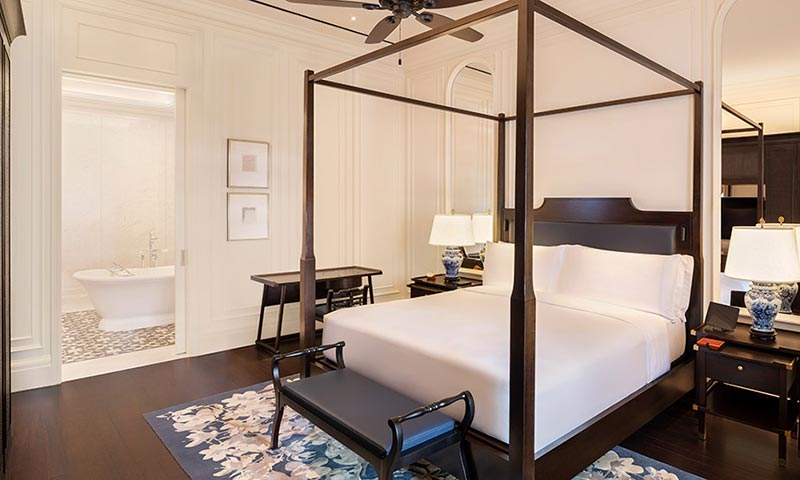
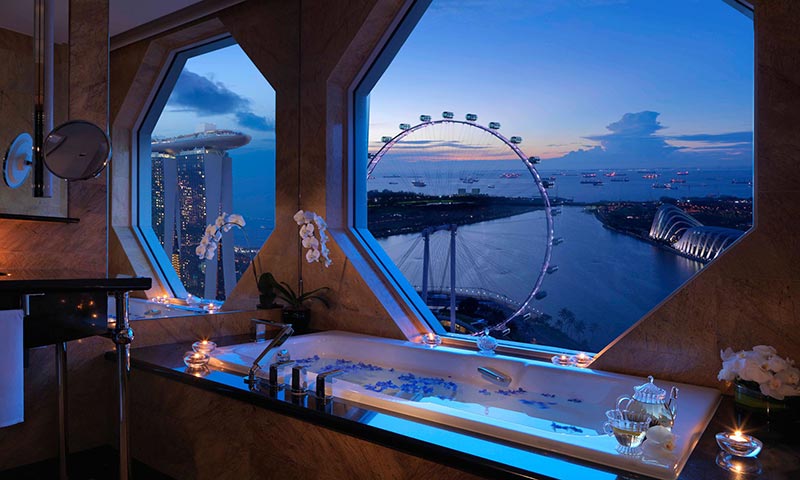
EAT
For a real Singapore street food experience, we would always recommend Chinatown Complex Food Centre located at Block 335, Smith Street. This is Singapore largest hawker centre with over 260 food stalls. Being soaked to the skin while dining is part of the real hawker deal! Another unmissable local food experience will be Amoy Street Food Centre. Be sure to keep a lookout for the stalls that were awarded 2019 Hawker Michelin Bib Gourmand awards.
If you wish to avoid the heat and want to experience the quintessential Singaporean dishes in a comfortable setting, we will recommend Labyrinth, a one-star Michelin modern Singapore restaurant.
If you have tried Singapore hawker fare, zoom in to Peranakan cuisine (Strait Chinese Nonya), a culture only found in Nanyang (Penang, Malacca, Singapore, and Indonesia). Located in the precinct of greenery Dempsey, Candlenut is the first Michelin-starred Peranakan restaurant for a modern take on the cuisine. Be sure to try their “Amakase” menu.
Another notable Peranakan restaurant worth trying out is Violet Oon’s Kitchen (we recommend their flagship outlet at Ion or the outlet at National Gallery). If your time is limited, there is also one outlet at Jewel Changi Airport.
One cannot leave Singapore without feasting on crabs, be it chilli, black pepper, salted egg or cream sauce and these two are our top favourites.
Mellben Seafood, located at 232 Ang Mo Kio Avenue 3, St 22, #01-1222, is primarily well known for their magnificent crab bee hoon.
Eng Seng First Grade Seafood Restaurant, located at 247 Joo Chiat Place, is well known for their Black Pepper Crab which will leave you craving for more. I can only say plan on arriving early as the crabs are always sold out by 6:30-7pm.
Finally, if you have tried most of the above and looking forward to something off the beaten path, you may want to experience dining on a Kelong at Smith Marine. A kelong is an offshore platform built predominantly with wood, which can be found in the waters off Malaysia, Philippines, and Indonesia. Only a handful remain in Singapore due to rapid urbanisation.
If you are keen, note that a minimum of 3 days advance booking is required. The restaurant used to function as a kelong for fishing before evolving into a restaurant in 2015. While you will be able to dine on an array of seafood, the star attraction here is the ‘sure-catch’ pond. Reel in your own lunch or dinner and enjoy the fruits of your labours.
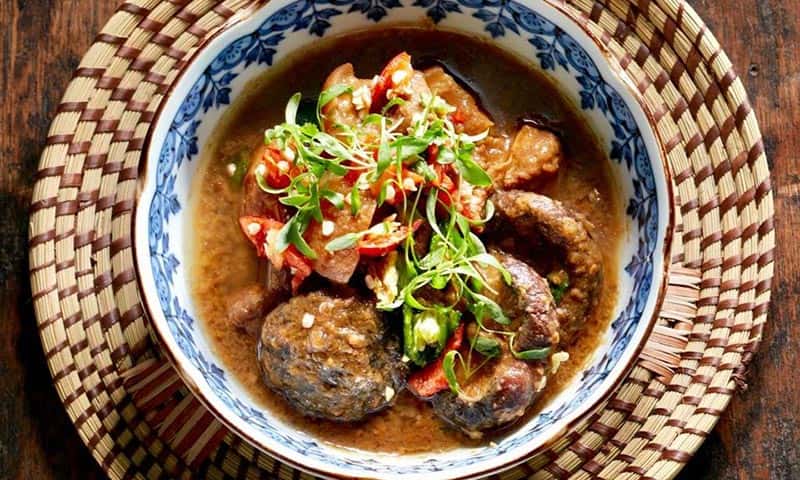
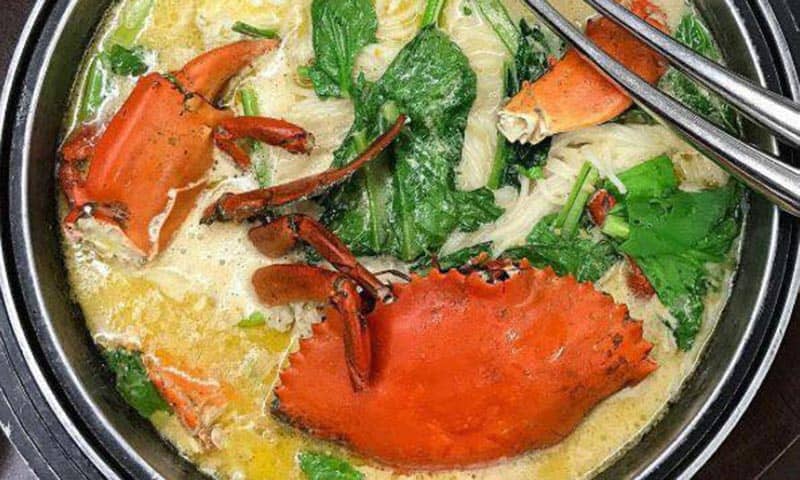
PLAY
Go on a Vespa sidecar tour in Singapore, riding through the historical parts of the city. Start the day early with a Kayak Fishing tour, paddling through the waters while reeling in your catch before spending some time relaxing by the beach in Sentosa.
For your cultural fix, visit the Chinatown Heritage Centre to learn about Singapore’s unique Five Foot Way (五脚基) buildings which you will see in so many parts of Central Singapore. Stroll along the Helix Bridge and admire its double-helix DNA design, and watch an outdoor light and water show at Marina Bay Sands and the Garden Rhapsody light and sound show at Gardens by the Bay. To cap your evening, you’ll head up to the 57th floor of the CÉ LA VI, located on top of Marina Bay Sands for drinks.
Or visit Joo Chiat and Katong area for a walking tour to learn more about the Peranakan influence in Singapore with its colourful rows of heritage shophouses and drop by Rumah Bebe to pick up some trinkets or two.
If you still have time for another round of drinks, visit Atlas Bar, a gorgeous gilded tower housing what may be the world’s most extensive collection of gin.
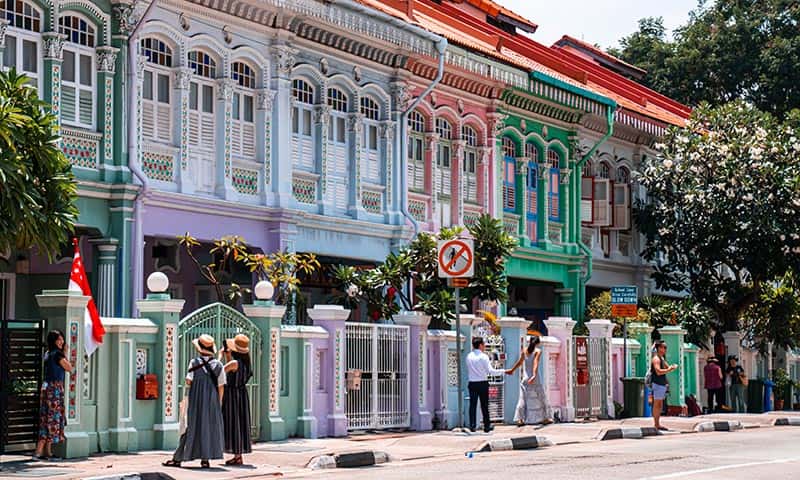
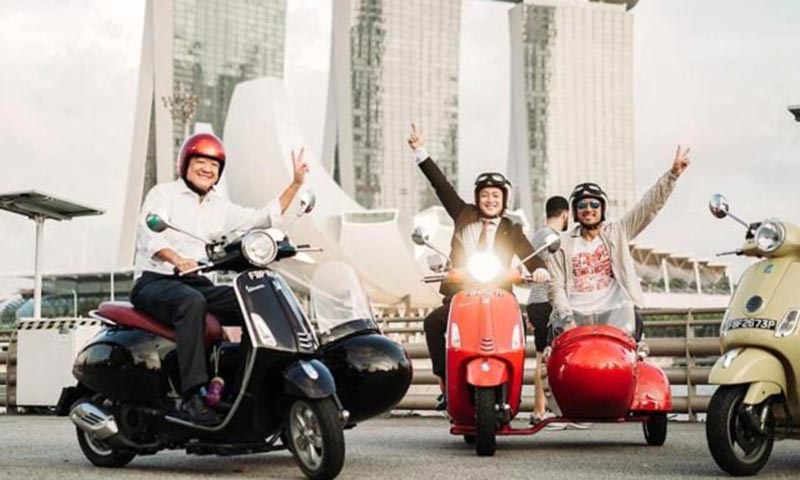
Contrasting the hustle and bustle of city life, here, you can slow down, calm your mind, and rejuvenate your senses in a refreshing way.
“In early August, I took a trip to Yunnan after Beijing was reclassified as a COVID-19 low-risk zone. I left the city to give myself a break, both physically and emotionally. I have been to Yunnan several times, and this time I chose its southern region to experience the local “wild and luxury tent” and “boutique home stay” that I had longed to try. On top of that, I wanted to avoid the peak tourism season to appreciate the World Heritage Yuanyang Rice Terraces and the historically appealing Jianshui Ancient Town.â€
By Stella Fan, Founder of Intriq Journey
Rice Terrace
I left Kunming for Honghe Hani and Yi Autonomous Prefecture, passing through Yuxi, Yuanjiang and the Tropic of Cancer on my way to arrive at Samaba Terrace (撒玛å梯田).
Samaba Terrace is the single largest rice terrace in the world and is also the first World Cultural Heritage site centered around farming culture in China. With an altitude between 600m and 1,880m and an annual average temperature of 20.9 ℃, it feels very much like a comfortable natural greenhouse.
Around 2,000 years ago during the Sui and Tang dynasties, a group of Di-qiang people migrated southward from the plateau area, crossing the Red River and arrived at the foot of Ailao Mountain. Upon settling there, their way of life changed from nomadic lifestyle to farming. During the Yuan, Ming and Qing dynasties, many Han people migrated from the north to the Red River Basin due to war, the expansion of wasteland areas and other causes. With this migration came the rapid expansion of the terrace. Now, the terrace covers a total area of one million mu (~ 165,000 acres) in Yuanyang, Honghe, Luchun and Jinping counties.
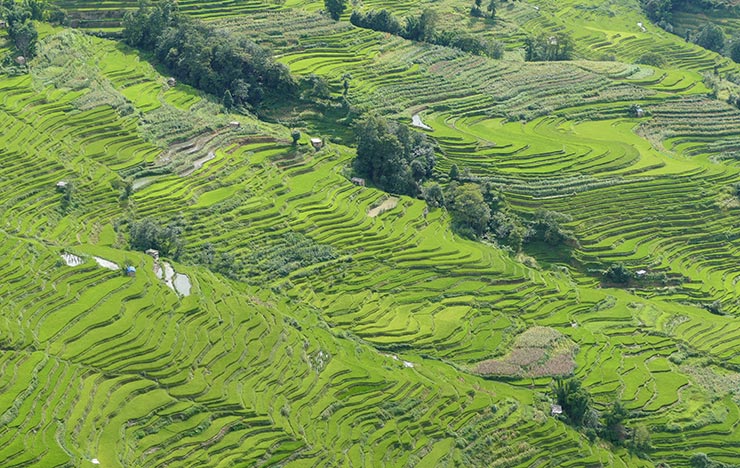
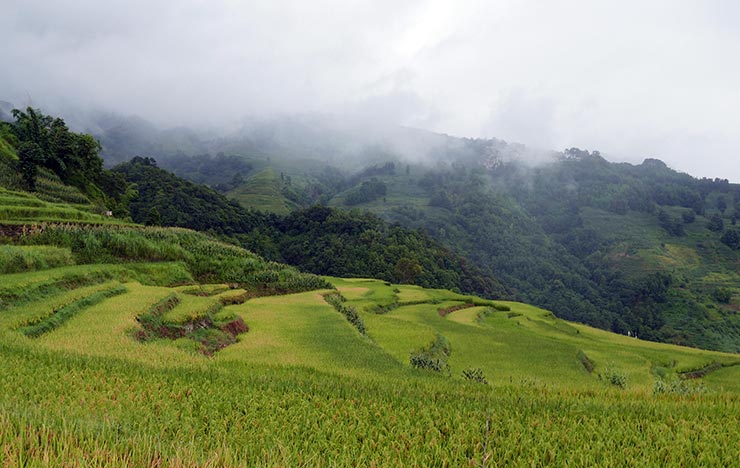
Impressive rice terraces stretch as far as the eye can see. During sunrise and sunset, the terraces shimmer with beauty as if they were colour palettes overturned by God. Their appearances also change with the seasons. After irrigation in the winter, the terraces often reflect different colours based on the time of the day.
Glamping
In the 170-year-old ancient Hani village ruins, a modern Chinese hotel group with a yearning for nature — Vinetree — designed and constructed 17 independent courtyard tents with a private bath and 5 public spaces, resulting in the Vinetree Honghegu Tented Resort where I spent 2 nights.
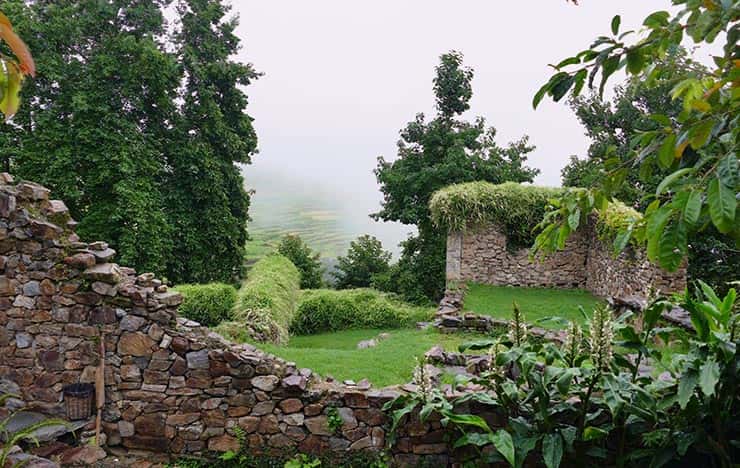
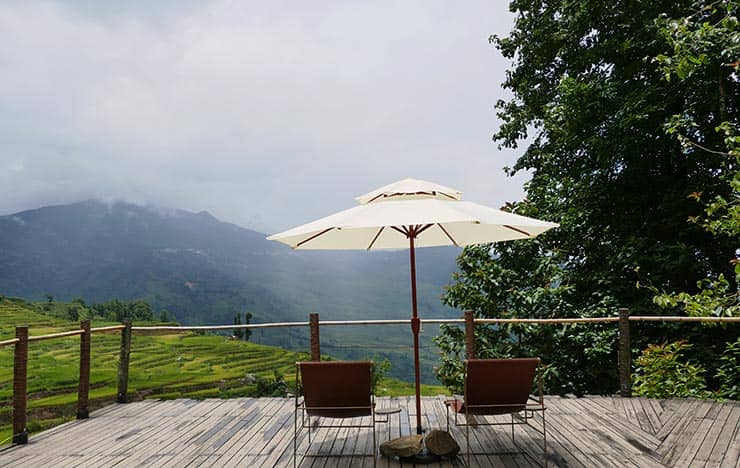
The resort is constructed within an abandoned Stone Stockade which blend perfectly into a village layout. The resort is arranged in the form of a terrace and each of the 17 independent tent is built apart, creating a unique and private space, facing the Samaba Terrace and the mountain forming the backdrop.
Tent
Detachable and removable tents are the best structures for “ecological tourism†as it can protect the original features of an area without damaging it.
The whole “tent room” is built with a steel structure and in 3 layers with zipper. Through the gauze curtain of the tent, I could see the greenery and my private bath under the trees.
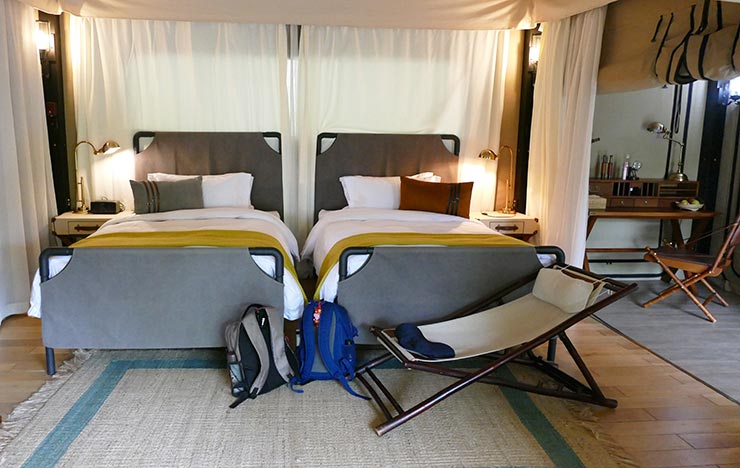
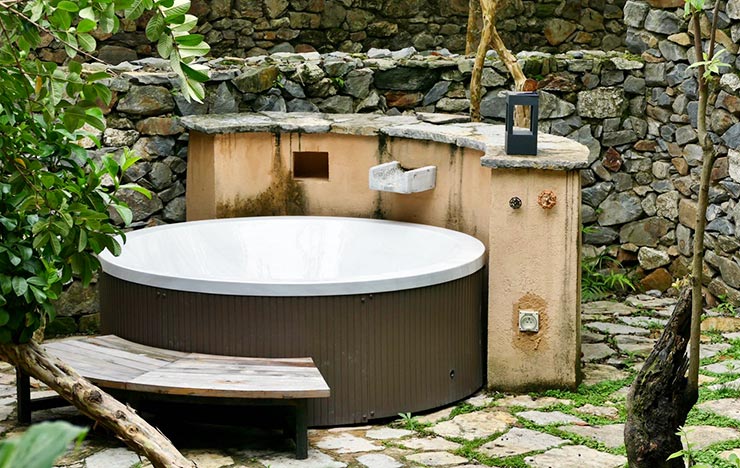
There is also a public infinity pool, with a water depth of 1.4 m, designed in the shape of a terrace ridge and naturally integrated into the whole terrace environment. It is one of the most popular places for children.
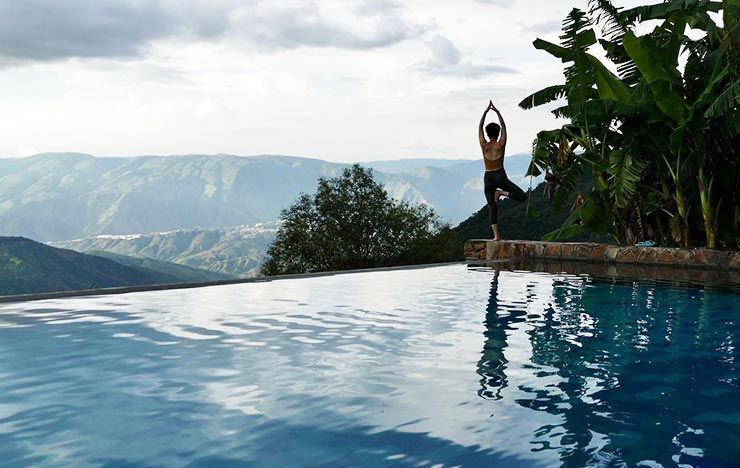
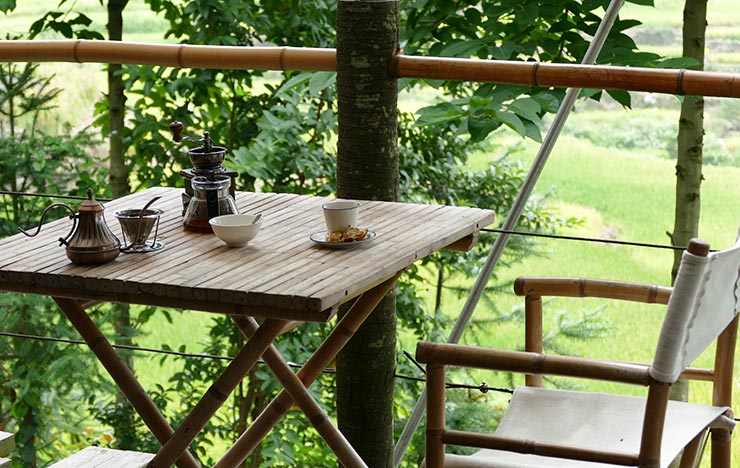
Delicious food
The hotel offers a fully inclusive package. Meals are specially prepared by the hotel using locally sourced ingredients, fresh from farm to table. Be prepared to enjoy some local specialties such as Hani dipping chicken, delicious dried beef known as Ganba, edible wild herbs, fish caught from the terrace, and red rice.
Some nights, the hotel will arrange a BBQ campfire party and it is a great social opportunity to get to know other travellers. No one thought it was crazy “to spend so much money to stay in a tent located on a remote mountain”.
Hike
Around the campsite there are many places that make for excellent hiking. These little-known places are still full of pure simplicity. They highlight the ancient horse caravans trade, history of Tusi in Yunnan and the essence of Hani farming culture.
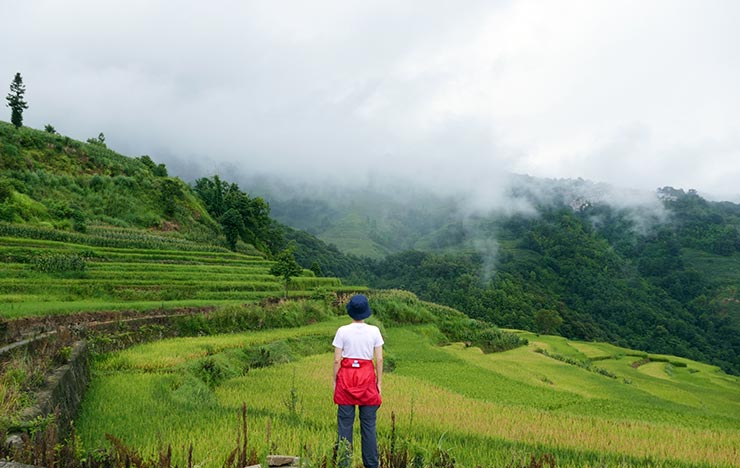
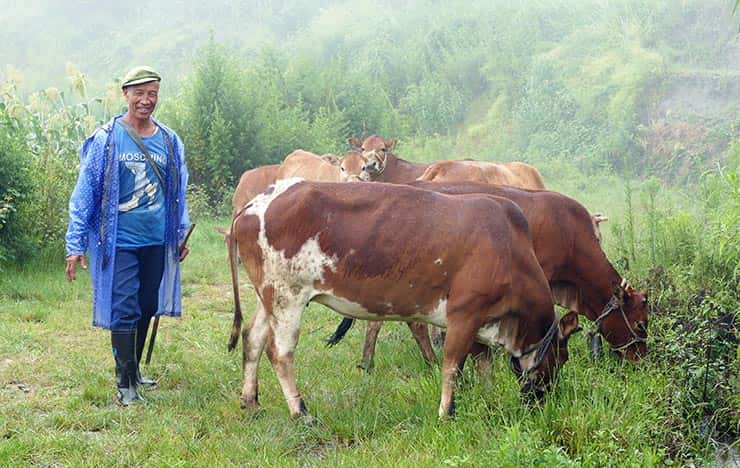
Friends
The resort employs 23 native Hani, including a few who are not fluent in Mandarin. Unassuming, industrious, and approachable, they are our special stewards. With these experts by your side, you will have the opportunity to try your hand at cooking glutinous rice cake, catching fish in the fields, learning embroidery or walking to Meidong Village, which belongs to the Hani Ethnic Group. They can also teach you all about Hani attire and cultural dances.
Although they may not be five-star hotel trained, you can sense their sincerity in wanting to showcase their home and culture to visitors. Working in the resort allow the young Hani people to maintain close family ties while staying connected with the outside world.
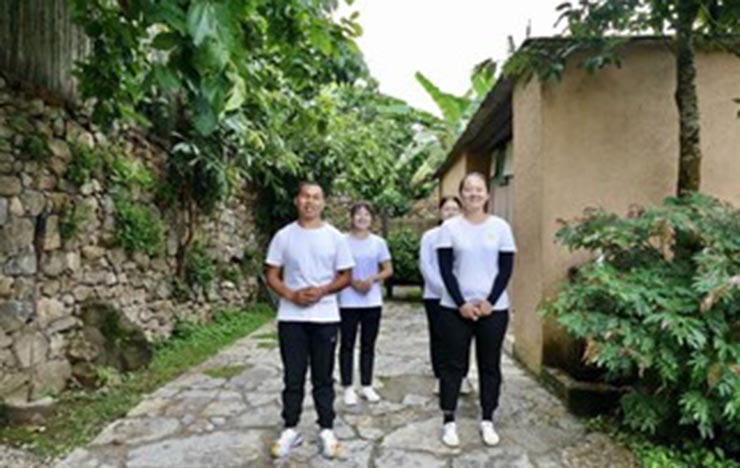
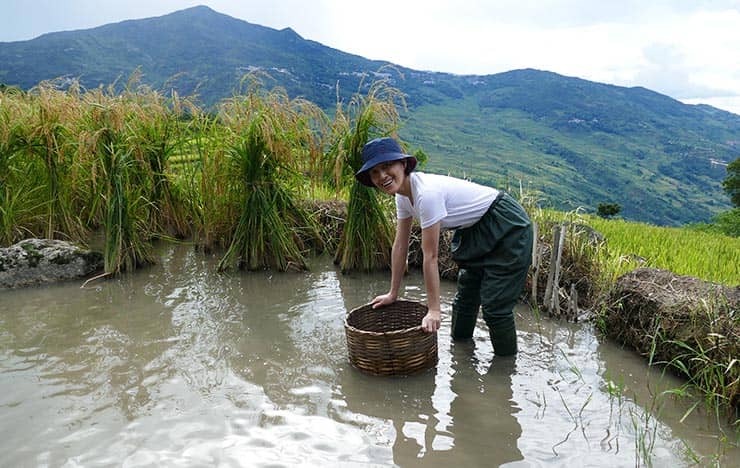
“Vinetree ideology is closely aligned with Intriq Journey. This is a world-class tourism village revival model and a prime example of sustainable ecological tourism in China. It balances accessibility and distance from the world, luxury and nature, development and inheritance. It is completely on par with tentage accommodation in other countries.”
By Stella Fan, Founder of Intriq Journey
Lively Hani Mushroom House
Continuing my journey, I left Vinetree Honghegu Tented Resort and drove to Azheke Village (阿者科哈尼æ‘) of the Hani Ethnic Group in Yuangyang for a night. With an altitude of 1,880m and 200-year history, the Azheke Village is part of the third group of traditional villages to be recognized nationally. This remote village has not been excessively commercialised, so not many visitors go there.
Hani people believe that “people’s lifeblood is the land, the lifeblood of the land is water, and the lifeblood of water is the forest and trees”. Villages of the Hani Ethnic Group is tightly integrated with forests, terraces, and bodies of water, forming a complete ecosystem.
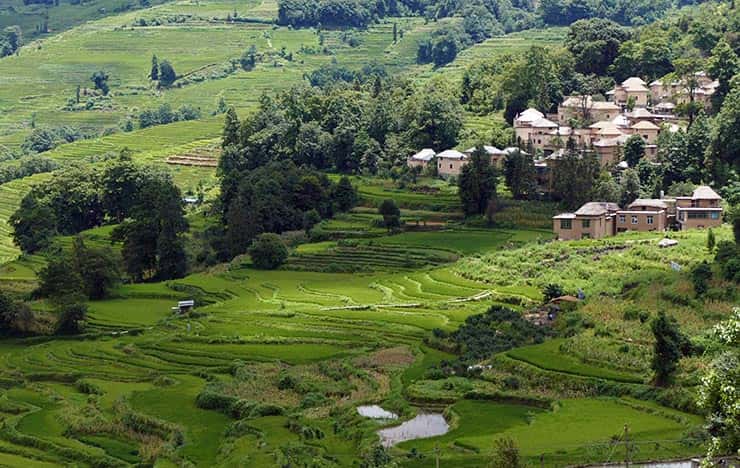
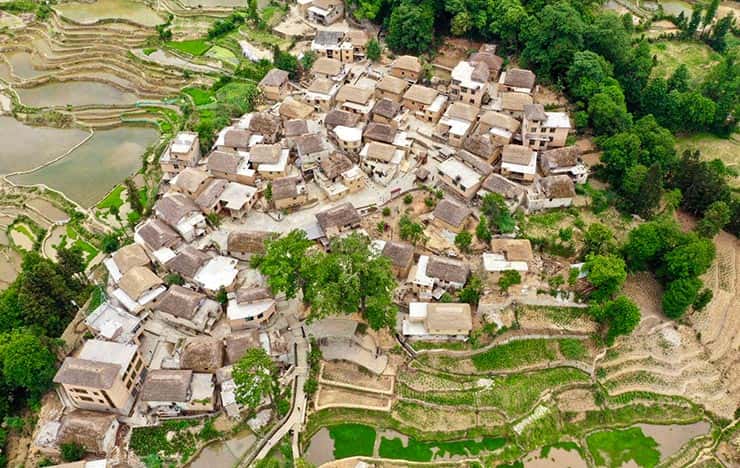
There are still more than 60 Hani “mushroom†houses in this village. Due to the uniqueness of their structure, the mushroom houses are neither cold in winter nor hot in summer. A mushroom house is three-storied: The ground floor is used to keep horses and cows and store grain carriers, plow harrows and other agricultural tools; the top floor is used to store cereals, firewood and others; and the middle floor is a living space available for cooking, resting, and receiving visitors.
In the village, chickens and ducks roam freely. Villagers carry baskets with vegetables, work the land, take care of children, and cook. Children can be found climbing trees and playing in the field. Under the trees are green paddy fields. The whole village is a lively organism.
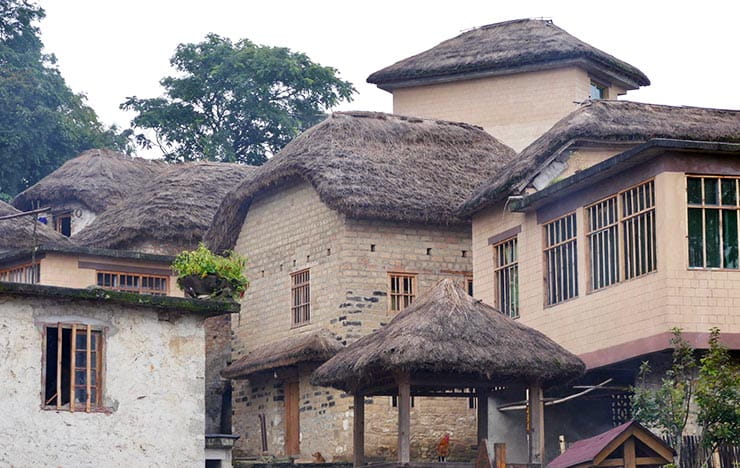
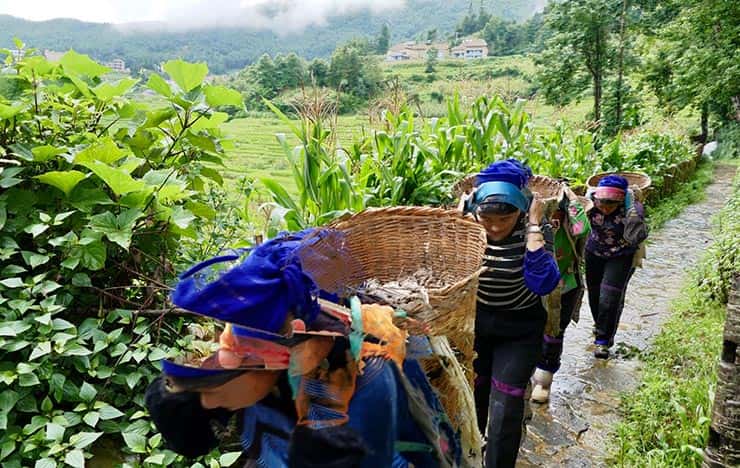
You can enjoy coffee in a cafe set up in a mushroom house, but outside, it is still the rooster’s domain.
If Vinetree Honghegu Tented Resort is positioned as a boutique hotel, then Orieco Club Mulaya Hotel, about a 3-hour drive from the valley, is a typical B&B hotel that I spent a night in order to visit the Azheke Village. The hotel is in the heart of the Hani Terrace Cultural Heritage site.
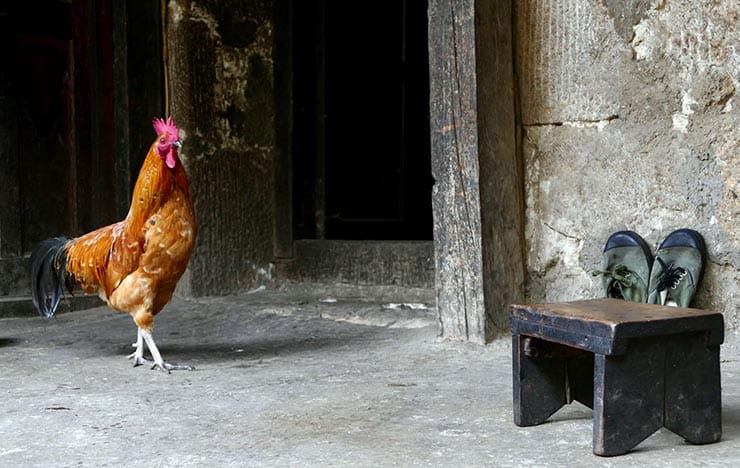
Living in History
I drove for around 3 hours from Orieco Club Mulaya Hotel to Jianshui Ancient Town (建水å¤åŸŽ) in the north. This town forms an equilateral triangle with the Red River Valley and Yuanyang.
Jianshui Ancient Town, founded in the Tang Dynasty, is in southern Yunnan and borders Vietnam and Laos. It has a history of more than 1,200 years and was an important transportation hub in the Ming Dynasty. Presently, there are still more than 100 buildings and dwellings with characteristics that can be traced back to the Yuan, Ming and Qing dynasties.
The Zhaoyang Tower (æœé˜³æ¥¼) resembles Tian An Men in Beijing and this is where elderly men walk their birds in the morning.
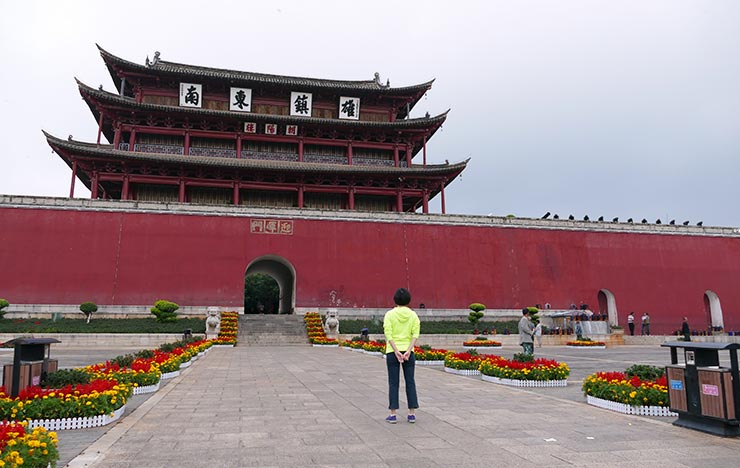
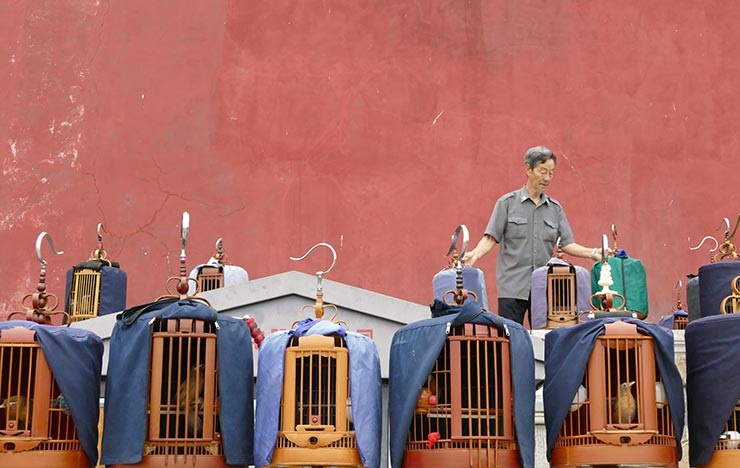
The Shuanglong Bridge (åŒé¾™æ¡¥) with 17 arches and a tower is a great dating spot for young people.
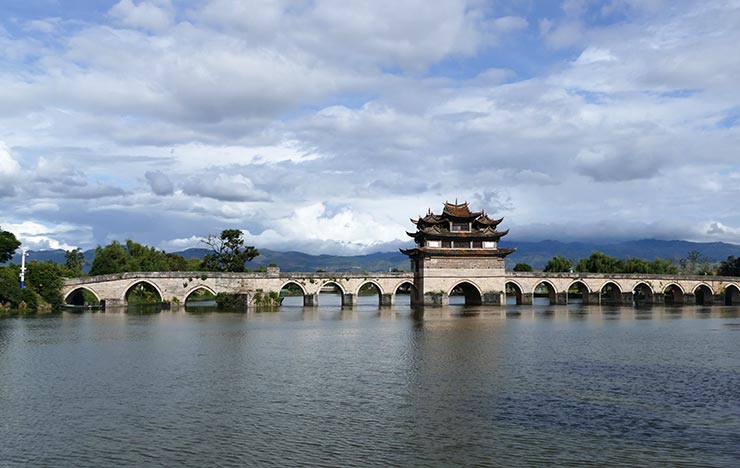
Ancient dwellings in Tuanshan Village (团山æ‘) have been passed down for over 30 generations and it is where the Zhang family clan members still go about in their daily lives. The scarred stone well in the village continue to provide drinking water for the residents for hundreds of years.
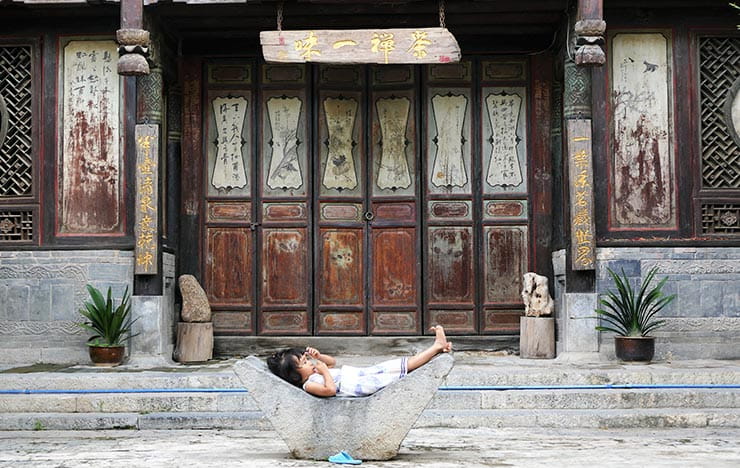
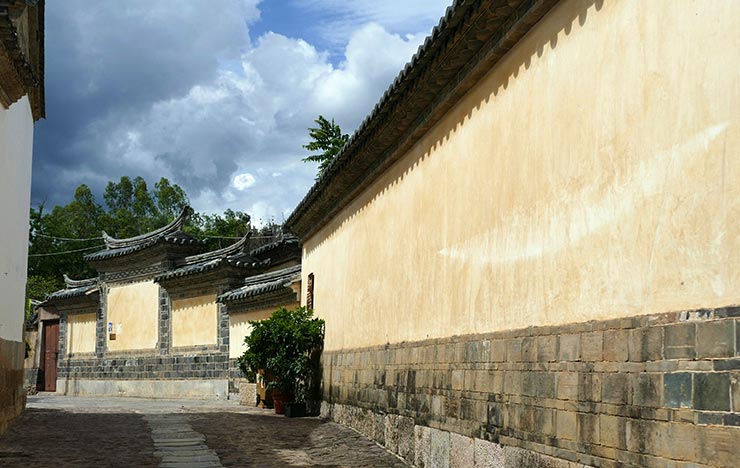
One can also find an examination hall that was built in the late Qing Dynasty, the French-style Xianghuiqiao Meter-gauge Station, the Garden of the Zhu family, which took more than 30 years to construct, a photo of Auguste Francois, Consul General of France in Yunnan… All these transport us into the turbulent world in southwestern China during the late 1800s and the early 1900s.
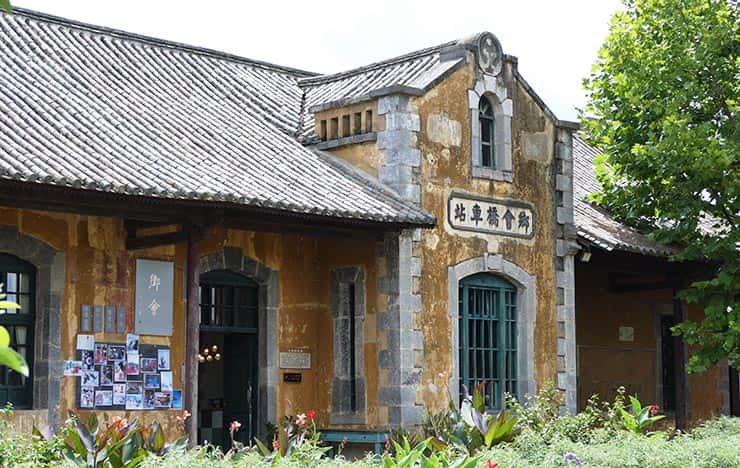
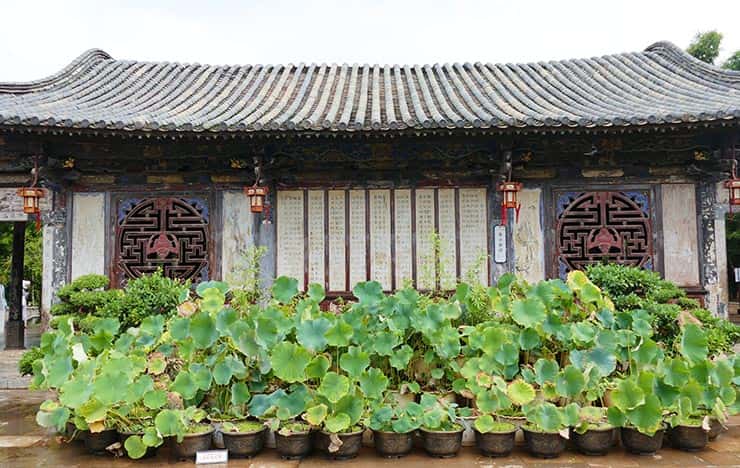
Tingziyun Hotel (å¬ç´«äº‘), my lodging in Jianshui, is a mansion belonging to Huang Jin of the Qing Dynasty. In this bustling town, the typical Southern-style quadrangle courtyard stands quietly and aloof from worldly strife. Pomegranate, bananas, lotus, and bamboo adorn the ancient courtyard. People living here can feel the change of four seasons without even stepping out.
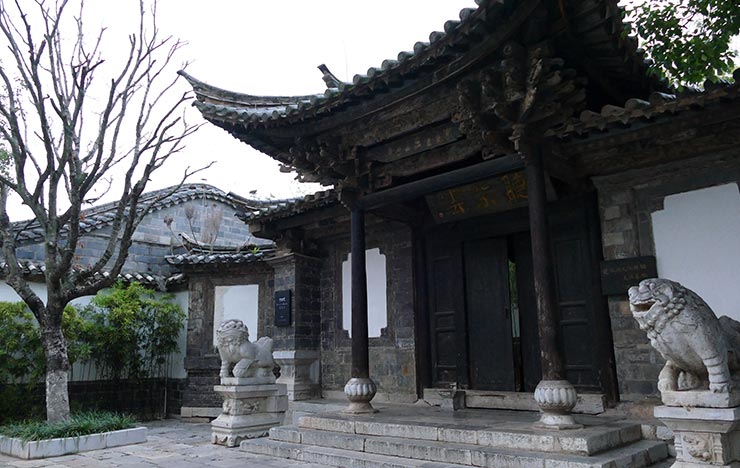
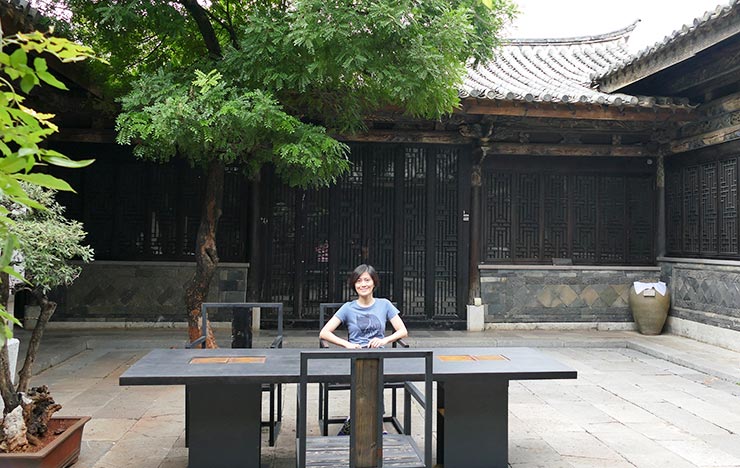
The interior features traditional Chinese furniture and decorations, which is both modern and comfortable. The courtyard is full of ancient elements that can calm your mind at once.
Lin Di, designer for Tingziyun, said that they individually marked, cleaned and put back the original bricks and tiles in the ancient dwelling to retain the original architectural style and recreate its original appearance as much as possible. Such intense attention to detail is present throughout the three-year reconstruction process. Lin Di said that the biggest thing he did for Tingziyun was “doing nothing”. I agree.
The winds howling in your face. Vast expanse that goes on forever behind your shades. Unbelievable landscape that doesn’t belong to Earth. It’s easy to feel that you are all alone in Salar de Uyuni, the world’s largest salt flats at over 10,000 km2 and undisputedly the highlight of any visitor to Bolivia.
Just fly there
With multiple daily flights connecting Uyuni with La Paz, Bolivia’s capital, the one-hour-long flight is clearly the better choice compared to the overnight buses which take over 10 hours.
Different seasons for different reasons
With rain turning Salar into a giant mirror, visiting it during the wet season from December to April set up the beautiful landscape with amazing reflections. During the dry season between May and November, the same area becomes endless white flat land, perfect for hilarious perspective photo opportunities. The clearer skies also make for better stargazing experience.
The incredible sights
Three days are enough to cover Salar de Uyuni; it’s also possible to travel onwards to San Pedro Atacama in Chile (a great destination in itself) instead of returning to Uyuni with the same amount of days. If you are short on time, there are shorter one or two-day options which return to Uyuni too.
Salar de Uyuni – Depending on season, the salt flats either become a canvas for picture-perfect mirror-like reflection or a backdrop for interesting perspective photographs.
Colchani Salt Factory – You can learn about the traditional method of extraction and refinement at the local salt factory on the way to or from Salar de Uyuni.
Coquesa – Site of ancient burial grounds at the northern edge of Salar de Uyuni, you can also hike up Thunupa Volcano from there.
Inkawasi (may be inaccessible during wet season) – This former island with giant cacti grown all over was turned a rocky outcrop of land located in the middle of the salt flats after prehistoric lake dried up. It provides a nice break from the flat terrain and an elevated viewpoint of the horizon.
Eduardo Avaroa Andean Fauna Natural Reserve – For those heading towards San Pedro de Atacama, you will pass through this beautiful nature reserve. It has amazing scenery and many opportunities to spot alpine animals such as vicuñas en-route. Stops include Laguna Colorada or Red Lagoon, home to several species of flamingos, Sol de Mañana geyser where intense volcanic activities can be seen and Laguna Verde or Green Lagoon, an emerald-coloured lake which is framed by Licancabur Volcano.
While traveling in Salar de Uyuni used to be a basic affair, it is possible to visit in style now with the following recent developments.
Mobile luxury with private guide and chef
Traveling around Salar de Uyuni in the deluxe Airstream camper, with your own private driver, guide and chef, is probably one of the most magical experiences around the world. Equipped with modern luxuries such as private bathroom with hot water and heated thermal blankets, the Airstream campers provides a mobile and luxurious base to explore the region. Each evening, after the sundowner cocktails and freshly-prepared dinner, the staff will leave you alone to immerse in the solitude of the salt flats, underneath the beautiful galaxy of stars. This option is especially ideal for those heading to Chile after Uyuni.
The ultimate glamping experience
Opened in 2019, Kachi Lodge has six space station-like domes, each equipped with heating, private bathroom and comfortable interiors, and provides the ultimate glamping experience. Meals are included and catered by Gustu, a top award-winning restaurant in La Paz. Guests can partake in a variety of activities at the lodge, ranging from hiking a volcano, cycling around salt flats, visiting archaeological sites to stargazing with astronomy experts.
Written by Intriq Journey
Georgia
“Imagine many centuries ago, caravans from Asia and Europe intermingle at this bazaar.”
“Look at this skyline with that Eastern Orthodox Churches, this modern sports complex and those drably ex-Soviet houses.”
Our excellent guide in Georgia was enthusiastically showcasing the capital, Tbilisi to us. Indeed, this was once a Silk Road caravan stop and one of the first countries to adopt Christianity as the national religion and hence Georgia is endowed with many historical Orthodox churches. Unfortunately, its recent history of being part of the Soviet Block etched an ugly reminder both in the cityscape as well as the people’s memory.
Today, Tbilisi is on the move with the Georgian looking forward and yet keeping its tradition. Outdoor cafe and restaurants in its historical quarter are chic and varied. Some local hotels are interesting and yet meet international luxury standard, such as Room Hotel, which we stayed in. It was an excellent start to our Caucasus journey and a good base to explore the country.
Apart from spending a day to explore Tbilisi, we made two full day excursions. A short 35mins drive away is Mtsheka, considered the birthplace of Georgia with the stunning setting of Javri Monastery overlooking the city. From here, another hour takes you to Gori. For its painful relationship with Soviet or Russia, Georgia unfortunately is the birthplace of the notorious dictator, Joseph Stalin. Well, at least, it is now a tourist attraction as most tourist made the “pilgrimage” to his on-site museum. And before returning to Tbilisi, we made a short detour to Uplistsikhe, a pre-historical cave dwelling that dated back 3000 years.
We also made a day trip to David Gareja. It is a long 2-hour drive but through beautiful windswept landscape. The main monastery’s setting against the remote dramatic cliff was outstanding and mystical. What we enjoyed most was hiking along the ridge popping into many of the cave chapels looking across to Azerbaijan.
No visit to Georgia will be complete without driving right up to the Russia border to visit the iconic site of Kazbegi. Here, set on a lonely ridgeline is Tsminda Sameba or “The Great Cathedral”. The majestic snow-capped Caucasus forms the perfect backdrop!
We stayed at Hotel Kazbegi, a luxury design hotel offering a wonderful view of Kazbegi and Caucasus. We got the Kazbegi view room to welcome the stunning sunrise the next morning.
From Kazbegi, it is a half day drive skirting past Tbilisi to arrive at Armenia and bid farewell to Georgia. Our time in Georgia was short, else I would have very much wanted to explore the Kakheti winery region or hike around Svaneti with its lovely landscape and unique “skyscraper” village architecture.
Armenia
A short while after crossing into Armenia, two UNESCO monasteries await us. Their names are most interesting. It was built by 2 princes at about the same time – Sanahin which means “this is older” as it was completed first; and Haghpat which was expanded so that as the name suggest “this is bigger”. Apart from the interesting names, both were excellent example of Armenian Orthodox monasteries 1000 years ago.
We spent the night in nearby Dzoraget in Tufenkian Avan Hotel built by a wealthy Armenian in America to promote traditional Armenian architecture.
Finally, we arrived in Yerevan, the capital of Armenia. Armenians are probably some of the toughest people in the world with painful history and current political environment. After WWI, the Turkish massacre millions of Armenians and till today, Turkish still denied the genocide and the world paid scant attention. Majority of Armenia’s historical territory is still in Turkey today and it is a landlocked country surrounded by its arch enemy – Turkey and Azerbaijan. It was an amazing experience when one evening at a local restaurant, a table of local diners after some drinks broke into traditional dances and songs of how much they love their country and wish for their motherland to be returned to them!
Yerevan is a beautiful city. We stayed in Marriott overlooking the central square with a musical fountain. Another great option available now is The Alexander, a member of the Luxury Collection. Many overseas Armenian contributed to the city’s landscaping. The National Museum is excellent and the Armenian Genocide Memorial very moving.
We also made 2 full days excursions out of Yerevan and Echmiadzin is certainly a highlight. This is where the Patriarch of the Armenian Orthodoxy reside and it is the Vatican of Armenia, endowed with historical treasure and just simply a powerful religious ambience. Nearby is another UNESCO World Heritage site, the 7th century Zvartnots ruin.
The next day, we visited a Greek archaeological site Garni and the gorgeous rock-hewed churches of Gerhard Monastery. The finale is Khor Virap. This is Armenian’s answer to Georgia’s Kazbegi, another most iconic landmark in the Caucasus. Built some 2000 years ago, this is Armenia’s most sacred monastery with a backdrop of perhaps Christianity’s most sacred mountain, Mt Ararat, believed to be where Noel’s Arch landed after the great flood.
The picture-perfect sight of medieval monasteries with Caucasus as backdrop and encounter with the locals telling their own stories as they go through a dramatic chapter of modern history both left behind wonderful memories. But perhaps, what set this destination apart from the rest is having so few tourists. Here you roam the UNESCO world heritage sites with your own private guide without crowds and enjoy the luxury tour arrangement of your personal driver / guide while staying in some of the best hotels. Go soon before the rest of the commercial tourism catches up.
Written by Intriq Journey
While many relates luxury holiday to Michelin star dining in France, branded shopping in Paris or indulgence resort in Maldives, Balkan can be a very surprising candidate for a luxury trip. And it is very much more affordable.
Accompanied by your personal throughout guide, who could be a professor, curated to suit your schedule and interest while exploring UNESCO World Heritage sites without masses of tourists, this will be luxury holiday in a very different way. And yes, you will be driven by luxury Mercedes limousine, stay in 5-star or charming boutique hotels and dine in chic little know secret places every dining.
Below are our top 4 luxury hotels in the Balkan region that are well located to explore the destinations.
The Plaza in Tirana, Albania
It is a surprise for a country that just opened to commercialisation to have a locally run luxury hotel that meets all international 5-star standard. The design is modern and chic and its location next to Skanderbeg Square within striking distance from the main F&B area and key museums is unbeatable.
Price: starting from ~Euro 160 per night

Credit: The Plaza Tirana
Square Nine Belgrade, Serbia
Right in the heart of the old town and short walking distance from the chic restaurant street and the Belgrade Fort, the location is ideal to explore Belgrade on foot. This design boutique hotel is also a showcase of what the Serbian can do looking towards Western Europe as their future.
Price: starting from ~Euro 180 per night

Credit: Square Nine Belgrade
Villa Dubrovnik, Croatia
The view across the bay towards the old city of Dubrovnik is to die for! Especially if you are sipping champagne at sunset or dining alfresco watching the city lights and boats dotting the water. Make sure you catch the complimentary boat shuttle to enter the old city through the harbour gate like how many arrived here during the Venetian time. The rooms are chic and well designed and of course, one that offer the view of the old city adds that much more.
Price: starting from ~Euro 600 per night during peak season.
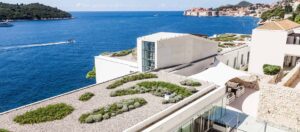
Credit: Villa Dubrovnik
Aman Sventi Stephan, Montenegro
Whether it is a gourmet trip through Croatia or an exotic adventure over Serbia, Kosovo, North Macedonia and Albania, this little gem is a befitting grand finale for sheer luxury and indulgence. The Aman brand promise is fulfilled here. Plus this hotel is the entire historical island wonderfully refurbished. The sunset at the old church, now the bar and the fine dining restaurant at the promontory courtyard are experiences that wow even the most jaded travellers.
Price: starting from ~Euro 1100 per night
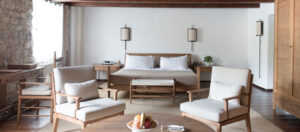
Credit: Aman Sventi Stephan
Tucked in the southeast corner of Europe, the Balkan region is where giants of history crossed paths, each leaving its influence, each giving its 8 countries their unique heritage, culture and charm. This is where avid travellers can fulfil its quests for off the beaten track experiences. It is not uncommon to be exploring a stunning UNESCO World heritage site without any other tourists. And while it is still a very cost-effective destination, you can enjoy the luxury of a privately guided in-depth tour!
From being the meeting points of medieval catholic west and the Eastern Orthodoxy; to the battle ground of the Venetian and Hapsburg with the Ottomans Turks; to becoming the only non-aligned Eastern bloc during the Cold War; to some the most ravaging wars in the 2 decades just past, history has not been kind to Balkan. But it leaves behind wonderful heritages and stories waiting for the most discerning tourists to enjoy.
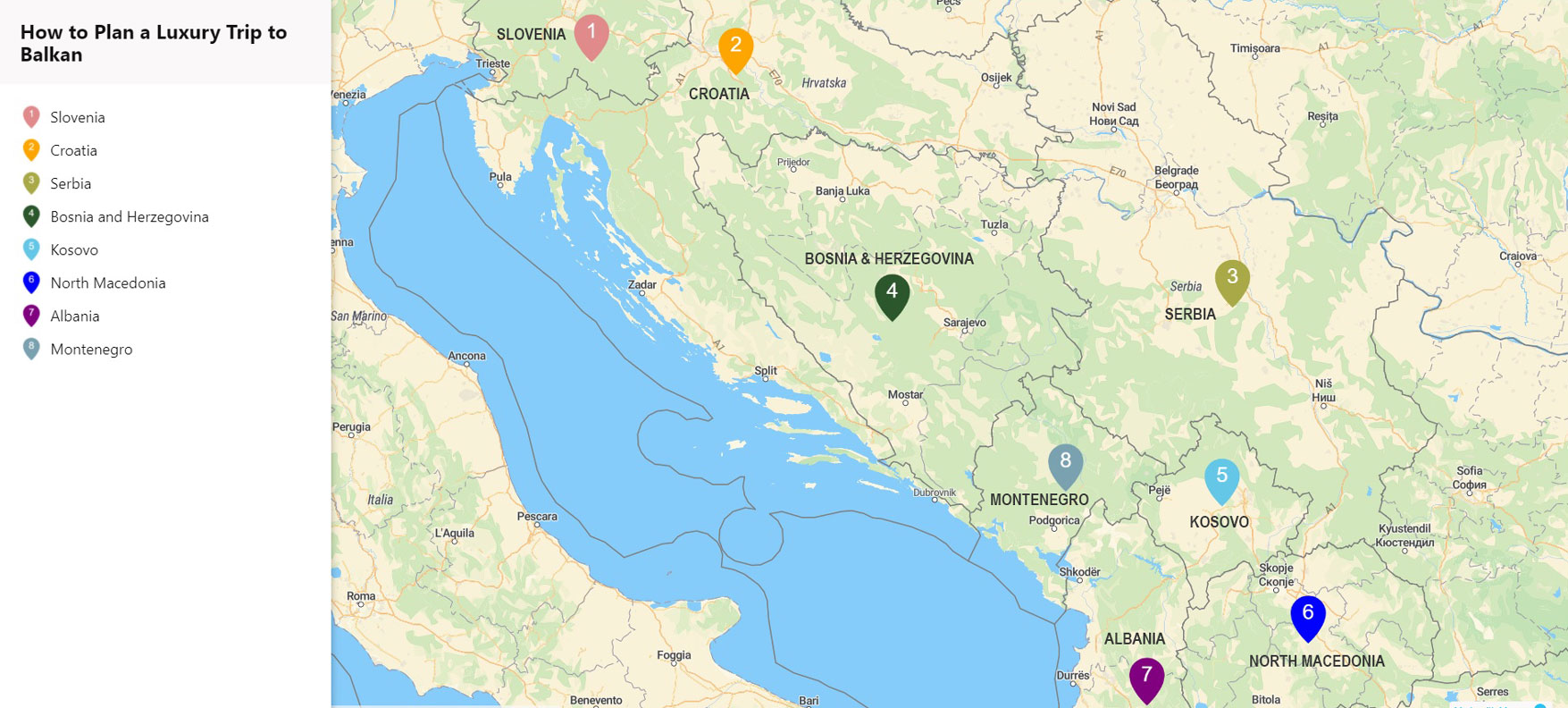
Slovenia
Slovenia is perhaps the most European of all the Balkan countries and has much more Hapsburg influence than Turkish. The capital city Ljubljana is hip with outdoor cafe and chic restaurants beautifully sandwiched between the mountains and Sava River. The renowned Viennese Secession architect left behind many stunning works in the city.
The focal point of natural beauty is without doubt Lake Bled but it is getting crowded with tourists. Quickly move into the remote part of the Julian Alps where lovely alpine villages offer Relais & Chateaux hotels and restaurants. Enjoy wonderful hiking while indulging in luxury and gourmet.
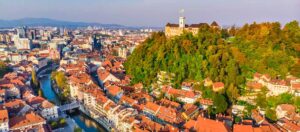
Croatia
Many compares Croatia to Italy before mass tourism. And rightly so. The Dalmatia Coast is dotted with wonderfully preserved Venetian Medieval towns such as Split and Dubrovnik and islands like Hvak and Korcula. And Plitvice National Park is not to be missed for its waterfalls and cascading pools of beautiful waters. Many liken it to be Jiuzhaigou of Eastern Europe.
The best kept secret of the country is perhaps Istria, a truly world class epicurean destination. With Alba in Northern Italy, they are the only 2 places in the world that produces the rare white truffles. Its olives oils rank with Tuscany to be the world’s best. And honey is another secret pride of the region. And all these combines with innovative local chefs and fine regional wine.
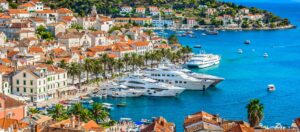
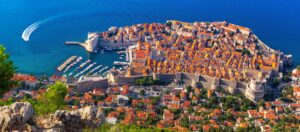
Serbia
As you move east and south, the influence of Eastern Orthodox churches and Ottoman Islam starts to become noticeable. In Northern Serbia, you can find 2 gems for Art Nouveau architecture – Subotica and Novi Sad. And some of the most beautiful Orthodox Monasteries are found in its south, the cradle of Serbia with the UNESCO World heritage sites of Studenica Monastery. And just over 1-hour drive away is Novi Bazaar where you will be mistaken for being in Turkey.
The capital Belgrade is also fast joining the pace of other European capital with interesting and charming restaurants and bars while retaining its distinct eastern ambience.
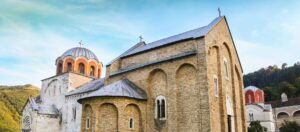
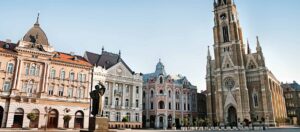
Bosnia & Herzegovina
Yes, it is now peaceful and safe! And the capital city of Sarajevo is perhaps the most charming of all Balkan capital cities with endless tales of the dramatic recent history. Afterall, it is here where World War One started and you can still retrace the assassination of Archduke Franz Ferdinand which started it all.
Another gem of the country is Mostar. Even if it were in Turkey, it would be a stunning Turkish old town to visit. The famous medieval 427 years old bridge, Stari Most destroyed during the Balkan War has now been rebuilt to its former glory.
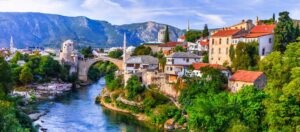
Kosovo
Again yes, it is now peaceful and safe to visit. Torn between its distinctly Albania heritage and recent Serbian occupation, this is where reminder of the Balkan conflict remains fresh and its stories most interesting.
Today, Kosovo is one of the world’s newest nation and a small one. But it is endowed with 4 UNESCO World heritage sites with Pec and Gracanica Monasteries being easy and outstanding visits. And you will probably be exploring it without any other tourists.
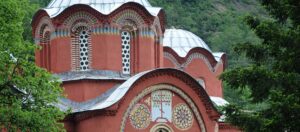
North Macedonia
There is perhaps one best word to describe Skopje, the country’s capital – bizarre! In this relatively small city, literally hundreds of statues some as high as 20m adorned its public square and streets. Its appeal is highly debated, but nevertheless a sight to behold!
The true beauty of the country lies in the south in Lake Ohrid. The ancient city of Ohrid is crammed with well-preserved historical houses, monasteries and forts set between the lake and the forested mountain.
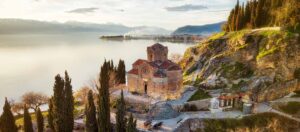
Albania
This could be the highlight of the whole Balkan tour and perhaps, it deserves an in-depth trip by itself. Before the fall of Berlin Wall, this country ranks with North Korea to be the most reclusive country and its then crazy dictator Enver Hoxha makes Stalin and Mao sound benevolent and open. It left behind so many interesting tales that a visit to the country is extremely interesting. Do not miss the Bunker Art Museum in Tirana.
It is also well endowed with fabulous historical sites. The highlight of the country is certainly Berat, an UNESCO World Heritage site, it is a visual treat of a medieval town sandwiched between river and mountains with stone walled houses and cobbled streets, lovely churches and mighty castle. Onufri Museum is not to be missed.
Gjirokaster is another medieval city of stunning setting and here the story of Enver Hoxha, being his birthplace add further colours. For even the most jaded Roman Ruin visitors, Butrint is still well worth a visit.
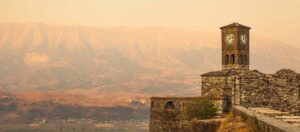
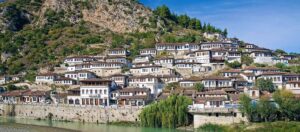
Montenegro
This tiny country is perhaps a befitting end to a Balkan adventure. The famous luxury resort chain Aman has a property here, Aman Sventi Stephan. It is a perfect base to explore the stunningly beautiful Kotor Bay, the interior ancient capital of Cetinje or many adventure activities among its hidden canyons.
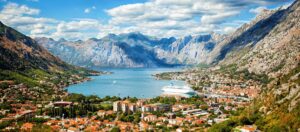
Recommended Itineraries for Luxury Private Tours
With 8 countries each with its many highlights, what is the best itinerary? Below are two recommended journeys.
1) Hiking and gourmet indulgence in Slovenia and Croatia
Start with Ljubljana before heading out for hiking in the Julian Alps including Lake Bled. Do indulge in the pampering of Relais and Chateaux hotels and restaurants. Then, drive south into Istria for a world class gourmet experiences before continuing south the Dalmatian Coast visiting Split and Dubrovnik with detour to Plitvice National Park and Mostar in Bosnia.
2) Europe’s last frontier – Serbia, Kosovo, North Macedonia and Albania
Start with Northern Serbia visiting Belgrade and the Art Nouveau gems of Subotica and Novi Sad. Then drive south to the cradle of the country, Studenica and the Turkish medieval town of Novi Pazar. Cross into Kosovo via Montenegro and visit its UNESCO World Heritage sites before continuing into North Macedonia. Be “wow” by the statues in Skopje before enjoying true beauty in Lake Ohrid. End the trip in Albania with Berat, Gjirokaster, Burtrint and finally its capital Tirana where the crazy stories of Enver Hoxha are told.
3) End with indulgence in Aman Sventi Stephan in Montenegro
For those with more time and wish to end the trip with luxury – both recommended trips above are within 2 to 3 hours drive to Aman Sventi Stephan.
Written by Intriq Journey
GET STARTED WITH YOUR PERSONALISED UNIQUE JOURNEY
Call us at (852) 2885 2181 or email us at enquiry@intriqjourney.com to start planning for a holiday that is completely tailored to your preferences.
Contact Us